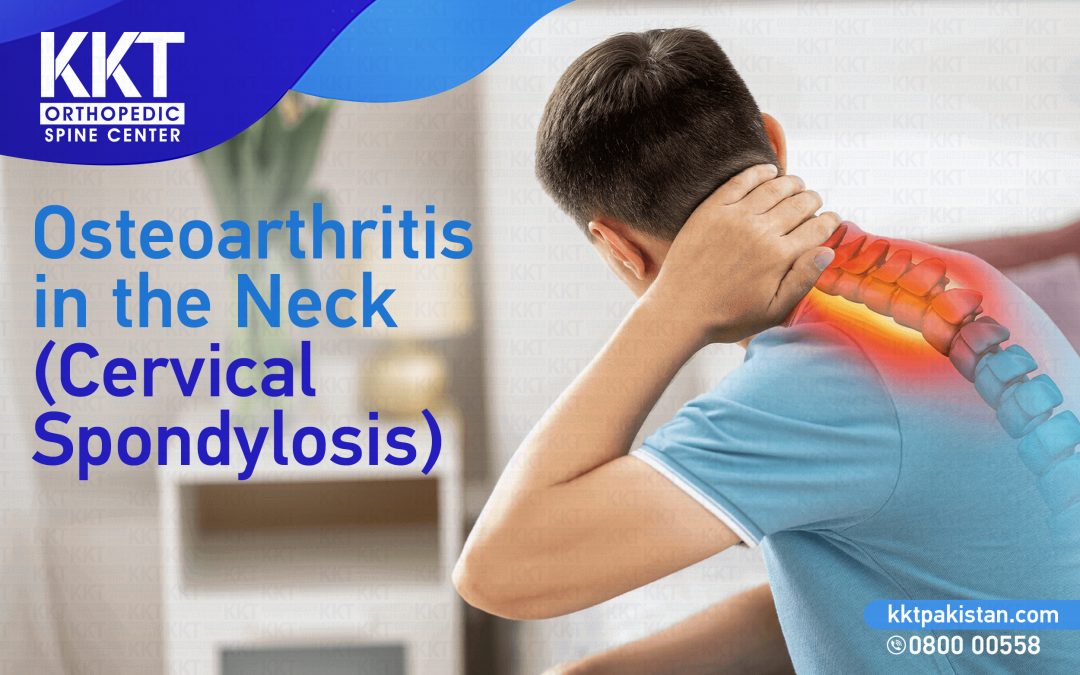Cervical osteoarthritis is also known as cervical spondylosis. This disorder involves joints, discs, and bones in the neck or cervical spine. With age, the discs gradually break down, losing the fluid and becoming stiff. Cervical spondylosis or osteoarthritis is a generalized term for age-related wear and tear in the neck. Common symptoms of osteoarthritis in the neck include neck pain and stiffness.
Symptoms of Osteoarthritis in the neck:
Usually, osteoarthritis (cervical spondylosis) causes no symptoms. But if osteoarthritis in neck symptoms do occur, the following are some of the common ones:
- Pain in the neck
- Stiffness in the neck
- Headaches (Arthritis in the neck can cause headaches if the damage occurs at the top of the spine (first, second or third vertebrae)
- Narrowing of the spine
- Weakness and numbness in the arms, hands, and fingers
- Difficulty in bending or turning the neck
Risk factors of Osteoarthritis in the neck:
What causes arthritis in the neck? The degenerative changes occurring throughout the spine as we age can lead to cervical spondylosis or osteoarthritis. One of the major risk factors of osteoarthritis is age. This spine-related condition is most common among middle-aged and older adults. However, there are several other factors that may increase the risk of arthritis in the neck, these include:
1. Family history:
Having a family history of osteoarthritis, neck pain, and spondylosis.
2. Job type:
An occupation that involves repetitive motions, heavy lifting, or overhead work putting stress on the cervical spine.
3. Other medical conditions:
Any prior injury to the neck or trauma can also increase the risk of osteoarthritis.
4. Weight
Excessive weight can lead to a higher risk for osteoarthritis in the neck. More weight puts excessive pressure on the joints. Furthermore, with excess weight, the inflammation caused can be more damaging.
Exercises for neck arthritis:
Physical activity or exercise plays a significant role in relieving arthritis pain in the neck. They strengthen the muscles that support the joints and decrease joint stiffness. Moreover, to improve mobility exercises also help with increasing blood flow.
A couple of exercises can help relieve symptoms of arthritis in the neck. Some of these exercises include the following:
- Chin tuck
- Active cervical rotation
- Shoulder rolls
However, there are some neck arthritis exercises to avoid. They include:
- Sit-ups
- Bridges
- Military press
Tips for exercises with osteoarthritis in the neck:
Following are some of the tips for safe stretching:
- Perform the stretches smoothly and gently
- Note that the stretch shouldn’t be painful
- Slowly increase the depth of stretches over time and repeat them if needed.
- Don’t hold your breath
In case of pain, book an appointment with KKT orthopedic consultants. KKT offers non-surgical spinal treatment for various conditions including osteoarthritis. For further information, you can contact us at the number given below.
Phone: 0800-00-558

